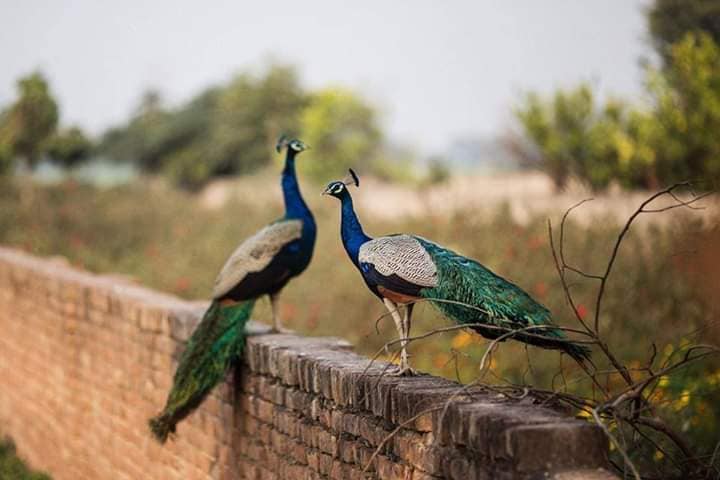Mahanidhi Madan Gopal Das
Welcome all lovers of Vrindavana! This is part five of our continuing series of articles glorifying Sridhama Vrindavana. For those who are new to this series, we will repeat the introduction, and then describe the pastime villages in NANDAGRAMA for part five.
Vraja [aka Vrindavana] is the divine realm wherein Sri Krishna loves, plays and sports with all and everyone. If you simply visit Vraja or live in Vraja, Gopala will enchant your heart by His sweet love, beauty, charm and naughty playfulness.
Filled with thousands of temples, Vrindavana is known as a “temple town”. In fact, the entire 168 sq. mile area of Vraja Mandala is adorned with thousands of temples, sacred places, mountains, rivers, lakes and bathing tanks.
Bhakti-ratnakara, a 500 year old holy book penned by Gaudiya Acarya Sri Narahari Chakravarti, describes over 300 different inhabited villages still existing today in Vraja Mandala. Each village is named after and commemorated to a particular amazing pastime of Sri Krishna which occurred there.
Vraja Dhama ki jai ho! This is such a unique and captivating sacred place. In every square mile of Vraja Mandala, one can visit two villages named after a divine lila that Sri Krishna enacted there 5,000 years ago! Here in Vraja, every step is a celebration of love leading us from village to village, lila-to-lila, and on into Krishna’s heart.
A series of articles will appear here to attract everyone more and more and more to this most astonishing, wonderland of pure love and never ending play. Sri Krishna’s pastime villages will be grouped by area like Kamavana, Govaradhana, Varsana, etc. The villages will be listed by their modern names. The origin of that name will appear in brackets after its English translation. Sri Vraja Dhama ki jai!
NANDAGRAMA & KOKILAVAN AREA LILA VILLAGES
Anjanauka
The name of this pastime village, where Sri Vishakha-sakhi forever lives, comes from the word anjana meaning eyeliner or kajala.
Once, Praneshvari sat in a hidden grove here while Her priya-sakhis adorned Her gorgeous divine form with costly jewels and ornaments. Just when they were about to apply the anjana to Kishori’s beautiful blue lotus eyes, Radhika suddenly heard the dulcet sound of Dhani Raya’s murali.
Excited and overjoyed, Sri Radha immediately ran away to meet Her Pranavallabha. When Radhika arrived, Shyama anxiously sat His precious one on a fragrant flower asana, embraced Her and eagerly relished Priya’s sublime elegance with His thirsty eyes. Shyama became very pleased to see that in Her haste to meet Him, Radhika had forgotten to apply kajala. Seizing the opportunity for Radha’s seva, Kanu then carefully applied anjana to Anuragini’s loving eyes.
Bijavari
This is the “thunderbolt village” because the name Bijavari derives from the word vidyuta-punja which means thunderbolt. Here Kanai Balai mounted uncle Akrura’s chariot to go to Mathura. Thoroughly distressed over their impending separation from Kanaiyalal, the damsels of Vraja cried out “Prananatha!” and fainted. To all observers, it seemed that many brilliant golden lightning bolts (vidyuta-punja) were striking the ground.
Parson
This village name means “the day after tomorrow”. While sitting on Akrura’s chariot, Acyuta tried to solace the saddened sakhis by saying, “I promise you that I will surely return the day after tomorrow.”
Sii
This village name comes from shighra which means soon because Sri Krishna repeatedly told the gopis, “I will return soon!”
Karehla
This village is named, not after a bitter gourd, but after a cowherd wrestler named Karahala, the father of Govardhana Malla, who sometimes stayed here with his wife Candravali.
Vrajabhumi ki jai ho! Jai Jai Sri RadheeeeeeeeeeeeeeeeeeeeeeeeShyama!!!!!!!!!

